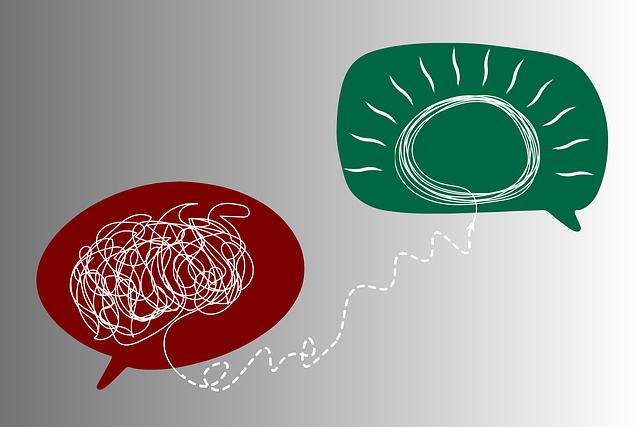Positive thinking exercises, integrated into Castle Rock OCD therapy along with strategies like gratitude journaling and cognitive reframing, empower individuals to manage stress, anxiety, and OCD symptoms. The Castle Rock Model, a structured framework for treating OCD, combines evidence-based practices and personal strategies to challenge obsessions, develop healthier coping mechanisms, and reduce OCD's impact on daily life, enhancing trauma support services and preventing healthcare provider burnout. Incorporating these techniques into daily routines promotes mental health and well-being, even for those managing Castle Rock Obsessive Compulsive Disorder Therapy.
Positive thinking exercises are a powerful tool in enhancing mental health and well-being. This article explores an effective approach, the Castle Rock Model, specifically tailored for treating Obsessive-Compulsive Disorder (OCD). We delve into the benefits of cultivating optimism and provide practical strategies to integrate positive thinking exercises into daily routines. Learn how these simple yet profound practices can transform your life, offering a new perspective on managing OCD symptoms.
- Understanding Positive Thinking and its Impact on Mental Health
- Implementing the Castle Rock Model for Obsessive-Compulsive Disorder (OCD) Therapy
- Practical Tips to Incorporate Positive Thinking Exercises into Daily Routine
Understanding Positive Thinking and its Impact on Mental Health

Positive thinking is a powerful tool that can significantly influence mental health and overall well-being. At its core, it involves shifting one’s mindset to focus on optimistic and positive aspects, even in challenging situations. This simple yet profound practice has gained substantial attention in Castle Rock Obsessive Compulsive Disorder (OCD) therapy and beyond. By cultivating a positive outlook, individuals can effectively manage stress, anxiety, and various mental health conditions, leading to improved quality of life.
In the context of OCD, for instance, positive thinking exercises can be integrated into therapeutic practices as part of the Mental Wellness Podcast Series Production. These strategies often involve challenging negative thought patterns and replacing them with more realistic, positive ones. Empathy Building Strategies play a crucial role here, fostering understanding and compassion towards oneself and others. Moreover, Crisis Intervention Guidance can benefit from positive thinking techniques, providing individuals with tools to navigate difficult times and promote mental resilience.
Implementing the Castle Rock Model for Obsessive-Compulsive Disorder (OCD) Therapy

The Castle Rock Model offers a unique and effective approach to treating Obsessive-Compulsive Disorder (OCD). This model focuses on reframing negative thought patterns and behaviors by providing a structured framework that empowers individuals to challenge their obsessions and compulsions. Through this therapeutic method, patients learn to manage their OCD symptoms by questioning the validity of intrusive thoughts and developing healthier coping mechanisms.
Implementing the Castle Rock Model in OCD therapy involves several key steps: identifying and challenging cognitive distortions, establishing a safe and supportive environment, teaching relaxation techniques, and gradually exposing individuals to anxiety-provoking situations. This structured process aims to reduce the impact of obsessions and compulsions on daily life, fostering a sense of control and empowerment. By integrating evidence-based practices and personal strategies, trauma support services can be enhanced, and burnout prevention strategies for healthcare providers become more effective in treating OCD.
Practical Tips to Incorporate Positive Thinking Exercises into Daily Routine

Incorporating positive thinking exercises into your daily routine can be a transformative step towards enhancing mental health and well-being, even for those managing conditions like Castle Rock Obsessive Compulsive Disorder (OCD) Therapy. It’s not about ignoring challenges but rather cultivating a mindset that focuses on optimism and resilience. Start by setting aside just 10–15 minutes each day for practice; this could be during your morning commute or before bed. Simple techniques such as gratitude journaling, where you list three things you’re thankful for, can help shift your perspective towards the positive aspects of life.
Another effective strategy is to reframe negative thoughts. When a challenging situation arises, take a moment to consider alternative, more optimistic interpretations. For instance, instead of thinking “I always mess up,” change it to “I made a mistake this time, but I can learn from it and improve.” Regularly engaging in these practices contributes to the development of a robust self-care routine, which is essential for managing mental health effectively, as highlighted in Risk Management Planning for Mental Health Professionals. Compassion cultivation practices, too, play a significant role in fostering empathy and kindness towards oneself and others, thereby strengthening one’s emotional resilience.
Positive thinking exercises, as demonstrated by the Castle Rock Model for OCD therapy, offer a powerful tool to enhance mental health. By integrating these practices into daily life, individuals can cultivate resilience and improve their overall well-being. Practical tips provided in this article serve as a starting point, encouraging readers to embark on a journey of self-improvement and discover the transformative effects of positive thinking. For those specifically dealing with OCD, the Castle Rock approach provides a structured framework for managing symptoms and promoting a more balanced mindset.










